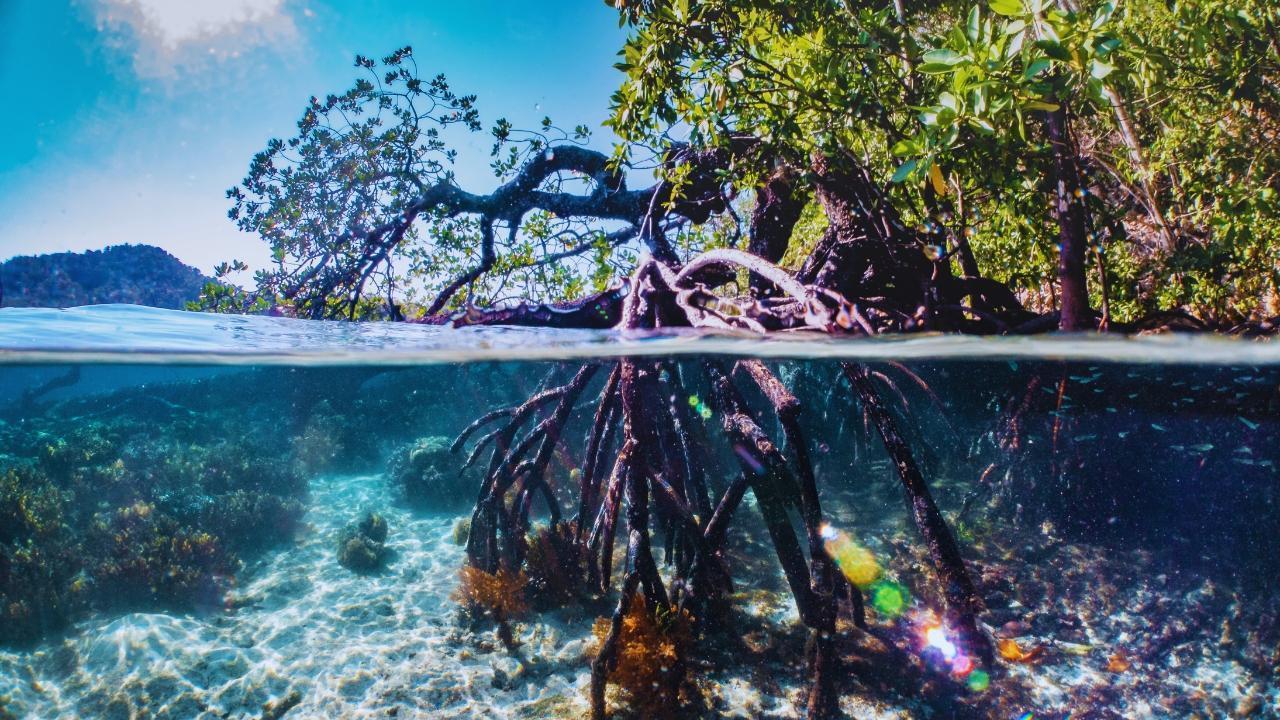
Join 10k+ people to get notified about new posts, news and tips.
Do not worry we don't spam!

Post by : Anis Farhan
Southeast Asia, home to some of the world’s richest ecosystems and fastest-growing economies, stands on the frontlines of climate change. Rising sea levels, coastal erosion, and agricultural stress are no longer distant threats—they’re daily realities. In response, the region is turning not only to satellites, solar panels, and AI but also to something more ancient: nature itself.
In 2025, the rise of “Nature Tech”—technology that supports or enhances natural ecosystems for climate resilience—is reshaping how Southeast Asian countries think about sustainability. This emerging sector is being driven by climate-focused startups, many of which are rooted in local contexts and traditions. Their mission: blend ecological wisdom with scientific innovation to build scalable, measurable, and regenerative climate solutions.
At the heart of this movement are mangroves, microbes, and machine learning—a trio that reflects how the natural world and modern technology are converging to tackle one of humanity’s greatest challenges.
Mangrove forests are Southeast Asia’s secret weapon against climate change. Found in coastal belts from the Philippines to Indonesia to Vietnam, these salt-tolerant trees offer an unparalleled combination of ecological and economic benefits.
In 2025, mangroves are no longer seen merely as natural buffers. They are now recognized as carbon powerhouses—storing up to five times more carbon per hectare than terrestrial forests. They also protect against storm surges, provide nurseries for fisheries, and prevent land erosion.
Startups like Blue Forests (Indonesia) and Mangrove Action Project (Thailand) are leveraging drone mapping, AI-based carbon monitoring, and blockchain certification to track mangrove restoration. These tools allow governments and carbon credit buyers to verify impact with precision.
Some companies are even offering “mangrove-as-a-service”, where landowners can opt into replanting programs and earn revenue through carbon offsets. With voluntary carbon markets gaining traction, these nature-based solutions are becoming economically viable and scalable.
While mangroves thrive above ground, the next frontier lies beneath the surface. In 2025, a growing number of biotech startups in Southeast Asia are exploring how microorganisms can combat climate challenges in agriculture, waste management, and soil health.
Take AgriBio (Malaysia), a company developing microbial soil enhancers that reduce dependence on chemical fertilizers while improving crop yields. Their microbial solutions enrich nitrogen-fixing processes, boost plant immunity, and increase water retention—all critical in drought-prone regions.
Meanwhile, BioLoop (Singapore) is engineering microbes that can decompose agricultural waste and produce biochar, which acts as both a soil enhancer and a carbon sink. Their innovation is now being trialed in rice paddies across Vietnam and the Mekong Delta.
These startups are showing that natural processes can be optimized with smart design, reducing emissions while supporting food security and farmer livelihoods.
While nature provides the raw power, technology adds the intelligence. AI and machine learning are increasingly being used to monitor forests, predict crop failure, and guide restoration efforts.
In the Philippines, ForestWatch.ai uses satellite imagery and deep learning to track illegal logging in real time. It alerts local authorities and Indigenous forest stewards via mobile apps. In Cambodia, GreenYield analyzes drone footage and weather patterns to recommend planting strategies that optimize yield and minimize pesticide use.
These tools don’t just offer data—they provide actionable insights for local communities. Some platforms even use natural language processing to convert complex data into regional languages, making climate tech truly inclusive.
The Nature Tech wave is drawing international attention. Climate venture funds like Asia Climate Partners, Circulate Capital, and Temasek’s GenZero are investing in early-stage startups that prioritize ecological regeneration and local empowerment.
In 2025, Singapore is positioning itself as the region’s Nature Tech capital, hosting accelerators and policy forums. The Singapore Green Plan actively supports startups that combine biodiversity conservation with market-driven solutions.
Crucially, this growth is not limited to urban tech hubs. In Indonesia, for instance, community-owned cooperatives are working with researchers to build open-source AI tools for mangrove monitoring. These models are designed by, and for, rural stakeholders—flipping the top-down narrative often associated with climate tech.
Despite rapid growth, Nature Tech startups face multiple hurdles:
Land tenure issues make it hard to secure reforestation sites or distribute carbon credit benefits fairly.
Lack of baseline data on biodiversity and carbon storage hinders certification and verification.
Funding gaps persist for pilot-stage innovations that don’t yet offer short-term returns.
Skepticism from communities still exists, especially where earlier development projects failed to deliver on promises.
To succeed, Nature Tech must not only prove its environmental impact but also build trust with communities, investors, and regulators.
The strength of Nature Tech in Southeast Asia lies in its biodiversity, traditional ecological knowledge, and urgency of climate vulnerability. The region combines:
Some of the world’s most carbon-dense ecosystems
Long-standing community-based forest management traditions
A youthful population with strong digital adoption
A shared need to balance economic growth with sustainability
As governments align their climate goals with digital transformation, Nature Tech offers a unique path forward—one that restores ecosystems while creating jobs, protecting coastlines, and fueling local economies.
In 2025, Nature Tech is no longer fringe—it’s a growing part of climate action portfolios across ASEAN. But to move from pilot to mainstream, the sector needs:
Policy support for public-private conservation projects
Access to climate finance, especially for rural innovators
Cross-border collaboration on data, standards, and knowledge-sharing
Community ownership, ensuring benefits flow to the grassroots
The goal isn’t just to fight climate change—it’s to rebuild our relationship with nature, using technology not to dominate ecosystems, but to regenerate them. And Southeast Asia, with its rich ecological heritage and rising tech talent, might just be where that future begins.
This article is intended for informational purposes only. It does not constitute investment, scientific, or environmental advice. Please consult local environmental agencies or sustainability experts before engaging with Nature Tech platforms.










Zohran Mamdani Clinches NYC Mayoral Seat as Victory Speech Blends Politics and Bollywood
Zohran Mamdani won New York City's mayoral race, becoming the city's first Muslim and South Asian ma

India Wins First Women’s World Cup 2025 Title
India lifts its maiden Women’s World Cup 2025 title! Harmanpreet Kaur’s team stuns South Africa in a

Manuel Frederick, 1972 Olympic Bronze Goalkeeper, Dies at 78
Manuel Frederick, a member of India’s 1972 Olympic bronze hockey team, has died in Bengaluru at 78 a

Muhammad Hamza Raja Wins IFBB Pro Card Puts Pakistan & UAE on Global Stage
Pakistani bodybuilder Muhammad Hamza Raja earns IFBB Pro Card in Czech Republic, showcasing Dubai’s

Shreyas Iyer’s Recovery Underway After Spleen Laceration in Sydney ODI
Shreyas Iyer is recovering after a spleen laceration sustained while taking a catch in the Sydney OD

Qatar Ready to Host FIFA U-17 World Cup 2025 in Aspire
Qatar confirms full readiness to host the FIFA U-17 World Cup 2025 from November 3–27, with world-cl